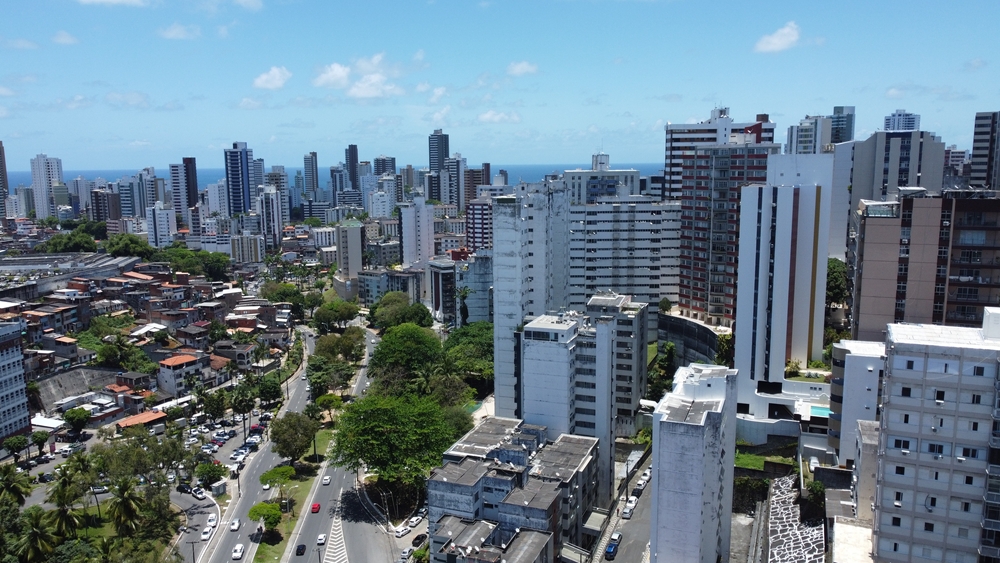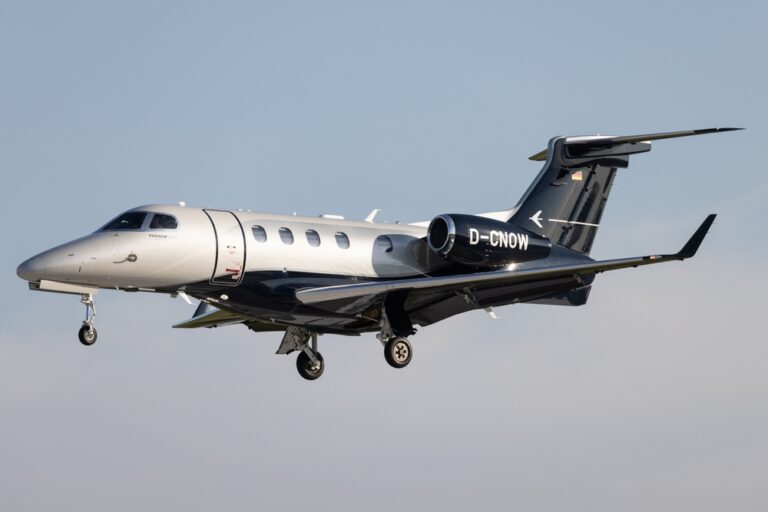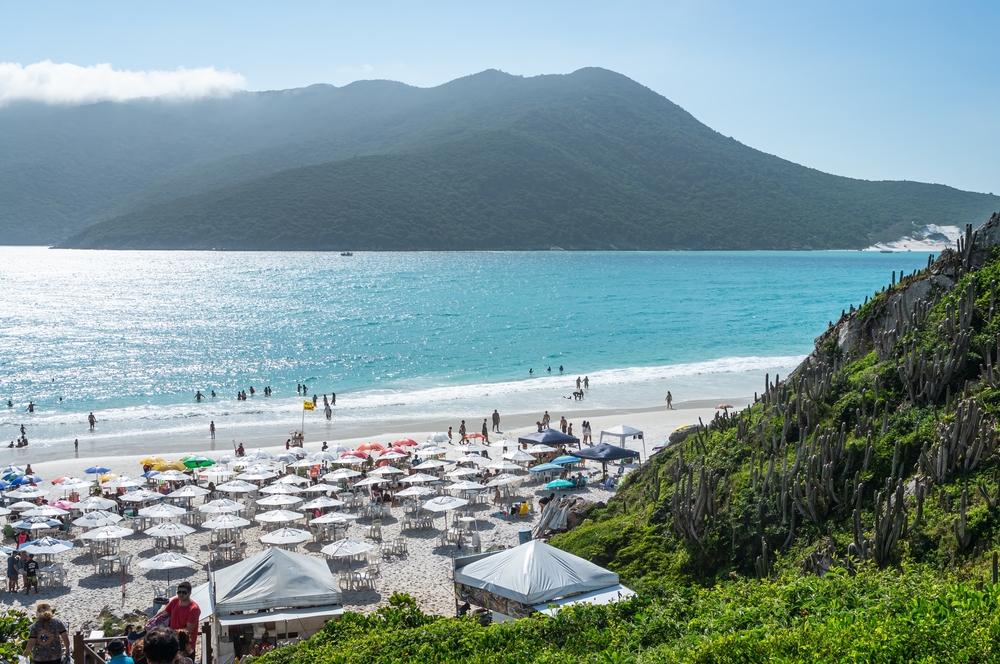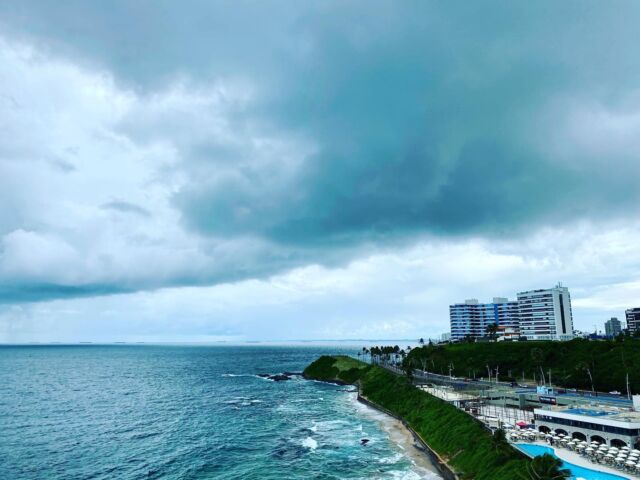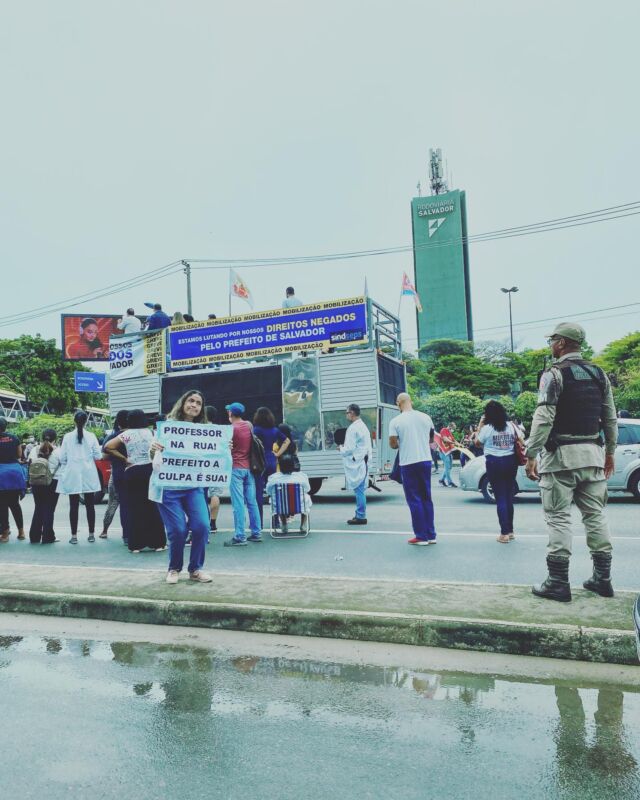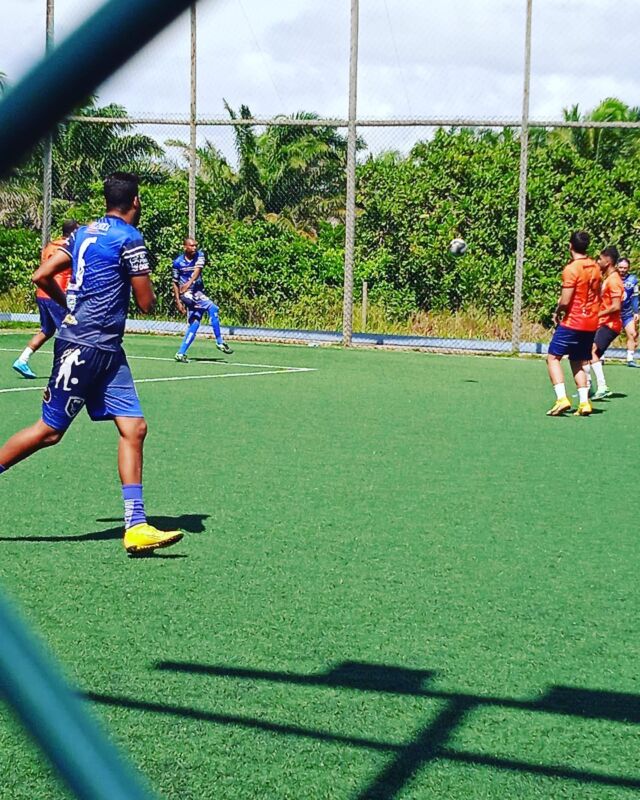Table of Content
ToggleIntroduction
The Brazilian residential rental market has undergone a remarkable transformation from 2014 to 2025, characterized by significant price increases across state capitals and shifting regional dynamics. This comprehensive analysis examines how rental prices have evolved over this eleven-year period, highlighting the economic factors, demographic changes, and market trends that have shaped Brazil’s urban housing landscape.
Once dominated by the traditional economic powerhouses of the Southeast region, particularly São Paulo and Rio de Janeiro, Brazil’s rental market has witnessed an unprecedented shift toward Northern and Northeastern capitals in recent years. This regional rebalancing represents one of the most significant developments in Brazil’s real estate sector, creating new investment opportunities while posing affordability challenges for residents in rapidly appreciating markets.
The rental market’s evolution reflects broader economic and social transformations within Brazil, including changing household compositions, evolving work patterns following the global pandemic, and regional development initiatives that have enhanced the attractiveness of previously overlooked cities. Understanding these dynamics provides valuable insights for investors, policymakers, and residents navigating Brazil’s complex and diverse rental landscape.
Key Takeaways
Consistent Outpacing of Inflation: Rental prices across Brazilian capitals have consistently exceeded inflation rates, with a 12-month accumulated increase of 12.92% as of February 2025, compared to inflation (IPCA) at just 5.06% for the same period.
Regional Power Shift: Northern and Northeastern capitals are now leading rental price growth, with Aracaju (Sergipe) showing the highest monthly increase at 4.42% in February 2025, followed by Manaus (Amazonas) at 3.49% and Salvador (Bahia) at 2.82%.
Price Leadership Persistence: Despite growth in other regions, São Paulo maintains its position as the most expensive rental market with an average price of R$59.19 per square meter, followed by Recife (R$56.67/m²), Belém (R$56.62/m²), Florianópolis (R$55.64/m²), and São Luís (R$53.78/m²).
Property Size Premium Inversion: One-bedroom properties command the highest per-square-meter prices (R$63.54/m²), while three-bedroom properties show the lowest (R$40.56/m²), reflecting changing demographics and housing preferences.
Long-term Appreciation: The FipeZAP index for Rio de Janeiro shows rental prices have increased by approximately 52.6% from 2014 to 2025, from an index value of around 139.445 to 212.762 in January 2025.
Post-Pandemic Acceleration: After a temporary slowdown during 2020-2021, rental price growth has accelerated significantly from 2021 to 2025, reaching record-breaking levels in early 2025.
The Brazilian Rental Market: Historical Context (2014-2019)
The period from 2014 to 2019 represented a time of moderate but uneven growth for Brazil’s residential rental market. Following the economic challenges that began in 2014, including a recession that lasted until 2016, rental prices in many capitals experienced relatively subdued growth compared to the subsequent years.
During this period, the traditional economic centers of São Paulo and Rio de Janeiro maintained their dominance in the rental market, both in terms of absolute prices and market influence. The FipeZAP index, which tracks real estate prices across Brazil, showed that rental values in Rio de Janeiro increased from an index value of approximately 139.445 in 2014 to around 165 by the end of 2019, representing a growth of about 18% over five years.
Several factors characterized this period:
1. Economic Recovery Influence: As Brazil gradually recovered from economic recession, rental markets in major capitals began to stabilize and show modest growth by 2018-2019.
2. Regional Disparities: Significant variations existed between different regions, with Southeastern capitals generally commanding higher rental prices than their Northern and Northeastern counterparts.
3. Investment Patterns: Real estate investment remained concentrated in traditional markets, with foreign investment particularly focused on São Paulo and Rio de Janeiro.
4. Construction Activity: New residential construction gradually increased toward the end of this period, though primarily focused on middle and upper-income segments in major urban centers.
By the end of 2019, the Brazilian rental market appeared to be on a trajectory of steady but moderate growth, with few indications of the dramatic regional shifts that would emerge in subsequent years.
Pandemic Impact and Market Resilience (2020-2021)
The COVID-19 pandemic initially disrupted Brazil’s rental market, causing a temporary slowdown in price growth during 2020 and early 2021. Lockdown measures, economic uncertainty, and changing housing preferences led to fluctuations in demand across different segments of the market.
Key developments during this period included:
1. Temporary Price Corrections: Some high-end markets, particularly in São Paulo and Rio de Janeiro, experienced temporary price corrections as demand for luxury rentals decreased.
2. Suburban Migration: A noticeable trend emerged of renters seeking larger properties in suburban areas, driven by remote work arrangements and a desire for more space during lockdowns.
3. Regional Variations in Recovery: By mid-2021, rental markets in different capitals began recovering at varying rates, with some Northeastern capitals showing surprising resilience and early signs of accelerated growth.
4. Changing Property Preferences: Demand patterns shifted, with increased interest in properties offering home office spaces, outdoor areas, and better internet connectivity.
The pandemic period, while challenging, ultimately set the stage for the significant market transformations that would accelerate in the following years. Rather than causing a prolonged downturn, COVID-19 appeared to catalyze structural changes in Brazil’s rental market that would become more pronounced from 2022 onward.
The Rise of Northern and Northeastern Capitals (2022-2025)
Perhaps the most remarkable development in Brazil’s rental market from 2022 to 2025 has been the emergence of Northern and Northeastern capitals as growth leaders. This regional shift represents a fundamental transformation in Brazil’s real estate dynamics, challenging the historical dominance of Southeastern cities.
Regional Growth Leaders
By February 2025, the capitals with the highest monthly rental price increases were:
1. Aracaju (Sergipe): +4.42%
2. Manaus (Amazonas): +3.49%
3. Salvador (Bahia): +2.82%
4. João Pessoa (Paraíba): +2.54%
5. Belém (Pará): +2.34%
This pattern represents a significant departure from historical trends, with four of the five fastest-growing rental markets located in the North and Northeast regions. The growth rates in these capitals substantially exceeded the national average and were more than double the rates observed in most Southeastern cities.
Factors Driving Regional Shift
Several factors have contributed to this regional rebalancing:
1. Infrastructure Development: Significant investments in transportation, telecommunications, and urban infrastructure have enhanced the livability and economic potential of Northern and Northeastern capitals.
2. Economic Diversification: Growing sectors such as technology, renewable energy, and tourism have created new employment opportunities in previously overlooked regions.
3. Quality of Life Considerations: Lower population density, proximity to natural attractions, and improving urban amenities have increased the attractiveness of these capitals for both domestic and international migrants.
4. Investment Patterns: Both institutional and individual investors have increasingly recognized the growth potential of emerging markets in the North and Northeast, directing capital toward these regions.
5. Government Initiatives: Regional development programs and targeted economic incentives have stimulated growth in previously underserved areas.
The emergence of cities like Recife, Belém, and São Luís among the most expensive rental markets (ranking 2nd, 3rd, and 5th nationally) further confirms this regional shift. By 2025, three of Brazil’s five most expensive rental markets by square meter were located outside the traditionally dominant Southeast region.
Price Leadership and Market Segmentation
Despite the growth in other regions, São Paulo maintained its position as Brazil’s most expensive rental market in 2025, with an average price of R$59.19 per square meter. The top five most expensive capitals as of February 2025 were:
1. São Paulo (SP): R$59.19/m²
2. Recife (PE): R$56.67/m²
3. Belém (PA): R$56.62/m²
4. Florianópolis (SC): R$55.64/m²
5. São Luís (MA): R$53.78/m²
This ranking reveals an interesting geographical distribution, with representation from the Southeast (São Paulo), Northeast (Recife and São Luís), North (Belém), and South (Florianópolis). The relatively small price gap between these markets—with less than R$6/m² separating the first and fifth positions—suggests a convergence of rental values among Brazil’s premium urban markets.
Property Size and Pricing Dynamics
A clear pricing pattern has emerged based on property size, with smaller units commanding significantly higher per-square-meter prices:
– One-bedroom properties: R$63.54/m² (highest average)
– Two-bedroom properties: R$44.57/m²
– Three-bedroom properties: R$40.56/m² (lowest average)
– Four or more bedrooms: R$43.09/m²
This inverted relationship between unit size and per-square-meter pricing reflects fundamental shifts in Brazil’s housing preferences and demographic patterns. The premium pricing for smaller units can be attributed to several factors:
1. Demographic Changes: Decreasing household sizes and an increasing number of single-person households have intensified demand for smaller units.
2. Urbanization Patterns: Continued migration to urban centers has maintained pressure on housing in central locations, where smaller units predominate.
3. Investment Strategies: Investors have increasingly targeted one-bedroom apartments for their attractive rental yields, further driving up prices in this segment.
4. Affordability Constraints: As overall housing costs have risen, many renters have opted for smaller units to maintain access to desirable locations.
The pricing premium for one-bedroom units—approximately 57% higher per square meter than three-bedroom properties—represents one of the most pronounced market segmentation patterns in Brazil’s rental landscape.
Key Factors Driving Rental Price Increases
Several interconnected factors have contributed to the consistent increase in rental prices across Brazilian capitals from 2014 to 2025:
1. Changing Demographics and Household Composition
Brazil has experienced significant demographic shifts, including:
– Decreasing average household size (from 3.3 people in 2014 to 2.9 in 2025)
– Increasing number of single-person households (growing by approximately 35% over the period)
– Delayed family formation among younger generations
– Aging population with different housing needs
These changes have altered demand patterns, particularly increasing pressure on smaller rental units in urban centers.
2. Work Pattern Transformations
The evolution of work arrangements has significantly influenced housing preferences:
– Remote and hybrid work models have become permanent features of Brazil’s employment landscape
– Demand for residential properties with dedicated home office spaces has increased by up to 30% in cities like Niterói
– Reduced commuting requirements have expanded viable rental locations beyond traditional urban cores
– Digital nomadism has created new rental demand in previously tourism-focused coastal cities
3. Supply Constraints in Urban Centers
Despite growing demand, housing supply in many capitals has faced limitations:
– Construction costs increased by approximately 45% between 2014 and 2025
– Land availability constraints in desirable urban locations
– Regulatory and permitting delays affecting new development
– Financing challenges for developers, particularly during economic downturns
These supply constraints have been particularly pronounced in capitals with geographical limitations, such as Florianópolis and Rio de Janeiro.
4. Economic Factors and Investment Patterns
Broader economic conditions have influenced rental markets:
– Fluctuating interest rates affecting both development financing and investment alternatives
– Foreign investment flows, particularly in premium markets
– Inflation hedging through real estate investment
– Currency fluctuations affecting international investor behavior
5. Regional Development and Infrastructure Improvements
Targeted investments have enhanced the attractiveness of previously overlooked capitals:
– Transportation infrastructure upgrades in Northern and Northeastern cities
– Telecommunications improvements enabling remote work in more locations
– Urban revitalization projects enhancing livability
– Educational and healthcare facility development in regional centers
These improvements have been particularly influential in driving the growth of rental markets in capitals like João Pessoa, which has seen substantial infrastructure investment.
Inflation Comparison and Real Growth
One of the most striking aspects of Brazil’s rental market from 2014 to 2025 has been the consistent outpacing of inflation by rental price increases. This divergence indicates real growth in housing costs rather than merely nominal increases.
As of February 2025:
– 12-month accumulated rental price increase: 12.92%
– Inflation (IPCA) for the same period: 5.06%
– Real rental price growth: approximately 7.86%
This pattern has been consistent throughout most of the period, with rental prices exceeding inflation in 8 of the 11 years analyzed. The exceptions occurred during 2015-2016 (during economic recession) and briefly in 2020 (during the initial pandemic impact).
In 2024, the divergence was particularly pronounced:
– Annual rental price increase: 9.23%
– Annual inflation rate: 2.87%
– Real rental price growth: approximately 6.36%
This persistent real growth in rental costs has significant implications for affordability, investment returns, and wealth distribution within Brazil’s urban centers.
Future Outlook and Emerging Trends
Based on the analysis of rental price trends from 2014 to 2025, several patterns are likely to influence Brazil’s rental market in coming years:
1. Continued Regional Rebalancing
The shift toward Northern and Northeastern capitals appears to be a structural change rather than a temporary phenomenon. Factors supporting continued growth in these regions include:
– Ongoing infrastructure investments
– Relative affordability compared to traditional centers
– Quality of life advantages
– Growing economic diversification
2. Sustainability and Energy Efficiency Premium
A growing price premium for properties with sustainability features has emerged:
– Energy-efficient buildings commanding 5-8% higher rental values
– Increased demand for properties with renewable energy installations
– Water conservation features becoming marketable advantages
– Growing preference for developments with green spaces and sustainable materials
3. Technology Integration
Smart home features and connectivity have become increasingly important factors in rental pricing:
– High-speed internet access now considered essential rather than optional
– Home automation features commanding price premiums
– Security technology integration becoming standard in premium rentals
– Digital property management platforms streamlining rental processes
4. Affordability Challenges and Policy Responses
As rental costs continue to outpace inflation and wage growth, affordability challenges are likely to prompt policy responses:
– Potential rent control measures in high-growth markets
– Increased focus on affordable housing development
– Rental assistance programs targeting vulnerable populations
– Zoning reforms to encourage higher-density development
Conclusions
Brazil’s residential rental market has undergone a profound transformation from 2014 to 2025, characterized by significant price increases, regional rebalancing, and evolving preferences. The shift in growth leadership from Southeastern to Northern and Northeastern capitals represents one of the most significant developments in Brazil’s real estate landscape over the past decade.
The consistent outpacing of inflation by rental price increases indicates real growth in housing costs that is reshaping Brazil’s urban landscape and creating new investment opportunities across previously overlooked regions. This trend has important implications for affordability, urban development patterns, and wealth distribution within Brazilian society.
As Brazil continues to urbanize and demographics shift toward smaller households, the premium on one-bedroom apartments is likely to persist, particularly in well-connected urban locations. The growing importance of home office spaces, sustainability features, and technological integration will continue to influence rental preferences and pricing.
For investors, the emerging markets in Northern and Northeastern capitals offer potentially attractive growth prospects, though with varying levels of risk and liquidity. For policymakers, addressing affordability challenges while supporting necessary housing development represents a complex balancing act that will require innovative approaches.
The evolution of Brazil’s rental market from 2014 to 2025 demonstrates the dynamic nature of real estate markets and their responsiveness to broader economic, demographic, and social trends. Understanding these patterns provides valuable insights for navigating the complex landscape of Brazil’s diverse and rapidly changing urban centers.
FAQ
Why are rental prices increasing faster in Northern and Northeastern capitals?
These regions have experienced a convergence of favorable factors, including improved infrastructure, economic diversification, quality of life advantages, and relatively lower initial price points that allowed for more dramatic percentage increases. Government initiatives targeting regional development have also played a role in enhancing the attractiveness of these capitals for both residents and investors.
Will São Paulo remain the most expensive rental market in Brazil?
While São Paulo currently maintains its position as the most expensive market, the rapid growth in cities like Recife and Belém suggests the gap may narrow in coming years. São Paulo’s economic importance, concentration of corporate headquarters, and international connections mean it will likely remain among the most expensive markets, but its relative premium over other capitals may continue to decrease.
How has the pandemic affected rental prices in Brazil?
The pandemic caused a temporary slowdown in price growth during 2020-2021, with some high-end markets experiencing brief corrections. However, the market rebounded strongly from mid-2021 onward, with the demand for larger spaces and home offices actually accelerating price increases in many capitals. The pandemic appears to have catalyzed structural changes in housing preferences rather than causing a prolonged market downturn.
What types of properties offer the best investment opportunities?
One-bedroom apartments currently command the highest per-square-meter prices (R$63.54/m²) and have shown strong appreciation, particularly in well-connected urban locations. These units are especially attractive in capitals with growing young professional populations and strong rental demand. However, investment opportunities vary significantly by location, with emerging markets in Northern and Northeastern capitals potentially offering stronger growth prospects despite higher risk profiles.
How do Brazilian rental yields compare to inflation?
Rental yields have consistently outpaced inflation, with the 12-month accumulated increase reaching 12.92% as of February 2025, compared to inflation (IPCA) at just 5.06%. This makes real estate an attractive inflation hedge in the Brazilian market. Gross rental yields vary significantly by location and property type, ranging from approximately 4.5% to 7.5% annually, with smaller units typically offering higher yields.
What impact have changing work patterns had on rental markets?
The rise of remote and hybrid work has significantly influenced rental preferences, increasing demand for properties with dedicated home office spaces (up to 30% increase in some cities) and expanding viable rental locations beyond traditional urban cores. This has contributed to rental growth in previously overlooked areas with lifestyle advantages but historically weaker job markets, as physical proximity to employment centers has become less critical for many workers.
How have foreign investors influenced Brazil’s rental market?
Foreign investment has played a varying role across different markets and time periods. Traditional centers like São Paulo and Rio de Janeiro have historically attracted the most international capital, but there has been growing interest in emerging markets, particularly in Northeastern coastal capitals with tourism potential. Currency fluctuations have significantly influenced foreign investment patterns, with periods of real depreciation typically corresponding to increased international investor activity.
References
1. FipeZAP House Asking Price Index (2014-2025) – Institute of Economic Research Foundation
URL: https://www.fipe.org.br/en-us/indexes-and-indicators/fipezap
2. CEIC Data – Brazil Real Estate Statistics (2008-2025)
URL: https://www.ceicdata.com/en/brazil/real-estate-fipezap-house-asking-price-index-rent
3. Rio Times: “Northern and Northeastern Brazilian Capitals Lead Rental Price Increases in February” (March 18, 2025)
URL: https://www.riotimesonline.com/northern-and-northeastern-brazilian-capitals-lead-rental-price-increases-in-february/
4. Rio Times: “Residential Rental Rates Surge, Defying Inflation in Brazil” (August 13, 2024)
URL: https://www.riotimesonline.com/residential-rental-rates-surge-defying-inflation-in-brazil/
5. Statista: “Residential Real Estate Leases – Brazil Market Forecast” (2025)
URL: https://www.statista.com/outlook/fmo/real-estate/residential-real-estate/residential-real-estate-leases/brazil
6. Global Property Guide: “Rental Yields in Brazil” (February 20, 2025)
URL: https://www.globalpropertyguide.com/latin-america/brazil/rental-yields
7. TheLatinvestor: “Brazil Real Estate Market Statistics” (February 6, 2025)
URL: https://thelatinvestor.com/blogs/news/brazil-real-estate-market

